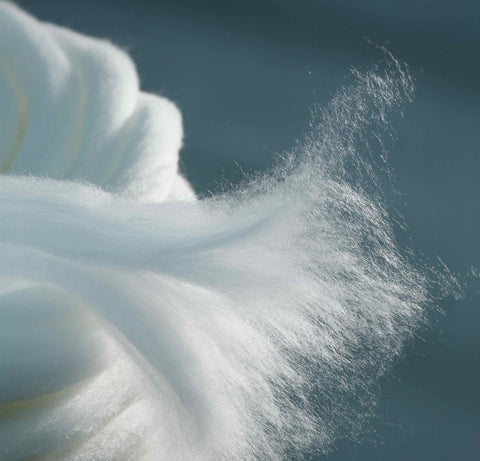Fabrics
All of our fabrics are carefully considered and selected for their sustainable properties and their natural benefits to our bodies and the planet.

For the most precious part of our body, we purposely choose fabrics & fibres that are super soft, can naturally breathe, are anti-microbial, naturally anti-odour and very absorbent.
In contrast, synthetic fabrics are non-breathable,
use many chemicals during the production process and are very polluting.
Wearing synthetic fabrics can also be a source of repeated infections.
Wearing synthetic fabrics can also be a source of repeated infections.
TENCEL™ Lyocell:
TENCEL™ Lyocell represents a minimum of 70% of each of our product
 The unique physical properties of TENCEL™ Lyocell give a softer than cotton hand-feel, it is gentle on even sensitive skin, thermal regulating, as well as naturally resistant to bacteria.
The unique physical properties of TENCEL™ Lyocell give a softer than cotton hand-feel, it is gentle on even sensitive skin, thermal regulating, as well as naturally resistant to bacteria.
TENCEL™ Lyocell is a cellulose fibre that is made from wood chips from a sustainable forest source, and harvested according to strict guidelines. Organic solvents are used to soak the wood chips and produce the fibres within a fully closed-loop water system.
Derived from nature, all standard TENCEL™ Lyocell fibre types are biodegradable & compostable under industrial, home, soil and marine conditions, thus they can fully revert back to nature.

Organic Cotton:
Our TENCEL™ Lyocell fibre is blended with organic cotton.
Organic cotton is grown from untreated natural seeds and grown without any chemicals or synthetic fertilizers. Crop rotation maintains a healthy biodiversity and balanced ecosystem. The yarns are also produced with no chemicals to make the finished organic cotton fabrics.
Organic cotton is grown from untreated natural seeds and grown without any chemicals or synthetic fertilizers. Crop rotation maintains a healthy biodiversity and balanced ecosystem. The yarns are also produced with no chemicals to make the finished organic cotton fabrics.
The TENCEL™ Lyocell & organic cotton fabric is carefully selected from an Oeko-tex and GOTS-certified factory source in Shanghai (GOTS = Global Organic Textile Standards). It is then transported to British Columbia Canada by Sea, as opposed to the higher carbon impact of Air transportation. One day we hope to source this and all of our fabrics from North America to reduce the carbon impact further.
Recycled Nylon Lace:
Our beautiful laces are created using a majority percentage of recycled nylon yarn, that has been spun from pre-consumer nylon waste. It is knit with a small percentage of new nylon yarns to add durability and elastane to give us stretch for the perfect fit. Our lace is carefully selected from an Oeko-tex and GRS-certified factory source in China (GRS = Global Recycling Standards)
Absorbency Fabrics:
Our internal protection absorbency fabrics are made from a composition of 100% Organic cotton & natural cellulose fibres. They are 100% Free of PFAS & PFOA(*).
The fabric's fibres are coated in a silver ion, which is tested & safe for skin contact. This inhibits bacteria from forming & growing, making the fabrics anti-microbial, anti-odour and super wicking. Keeping you fresh, whilst absorbing everything you need.
Our absorbency fabrics are grown, spun & made in the USA. Making their transportation and carbon impact as low as we can. As well as meeting the stringent requirements and standards of all USA-made fabrics. Including CPSIA requirements, EPA and OSHA.
Recycled Polyester:
Our recycled polyester fibre is made from 88% post-consumer plastic. The yarns are produced with a small amount of elastane for the necessary fit.
The fabric is carefully selected from an Oeko-tex and GRS-certified factory source in Taiwan (GRS = Global Recycling Standards). It is then transported to British Columbia Canada by Sea, as opposed to the higher carbon impact of Air transportation. One day we hope to source this and all of our fabrics from North America to reduce the carbon impact further.
The fashion and textile industry is considered to be one of the world’s top polluters, and one of the heaviest natural resource consumers.
We don't want any part of that.
